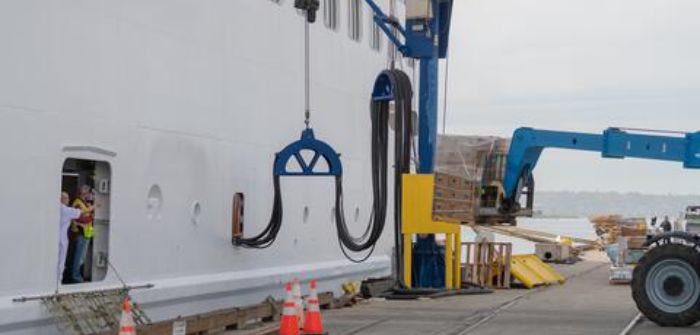The Port of San Diego has awarded a US$676,270 equipment purchase and consulting service agreement contract to Watts Marine (formerly Cochran Marine) to create an additional shore power connection point.
This shore power connectivity at its B Street cruise ship terminal will enable vessels with starboard connections to access shore power at B Street Pier’s south berth, adding further versatility to the existing system, and is projected to improve air quality and reduce greenhouse gas emissions on and around San Diego Bay.
“The Port of San Diego has shown we are not afraid to be a port first and take our role as an environmental champion of the bay to heart,” said Rafael Castellanos, chairman of the Port of San Diego Board of Port Commissioners. “The cruise industry injects hundreds of millions of dollars into our local economy and provides jobs for San Diegans making it vital for the Port to find ways to revolutionize the industry in an environmentally conscientious way and secure the industry’s longevity.”
This latest investment in shore power helps meet one of several goals in the Port’s Maritime Clean Air Strategy (MCAS) by reducing pollutants, such as nitrogen oxide (NOx) and diesel particulate matter (DPM), as well as greenhouse gas emissions (Oceangoing Vessel Objective 2A). It also supports the port’s goal of a healthy and sustainable bay, and advances its commitment to the California Air Resource Board’s At-Berth Regulation.
The design phase of the third shore power connection began at the end of last year and is anticipated to be completed this year. The port put its first shore power connection at the cruise terminals into service in 2010, making it among the first ports in California to have shore power available for cruise ships and beating a state regulation to reduce diesel particulate emissions from at least 50% of cruise calls by nearly four years. A second shore power plug was installed in 2022, enabling two ships to simultaneously use shore power rather than running their diesel engines while at berth. The port’s investment into adding shore power to various cruise and cargo terminal areas totals approximately US$24.7m in infrastructure costs to date.
For more key ports and harbor updates from the electric and hybrid marine technology industry, click here.



